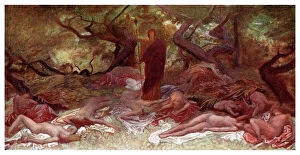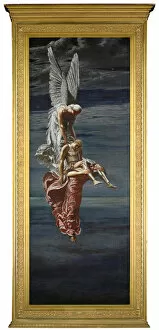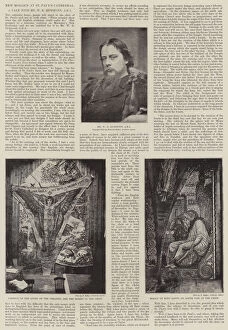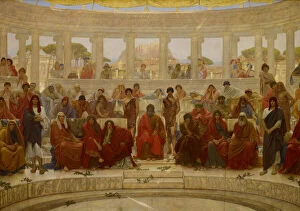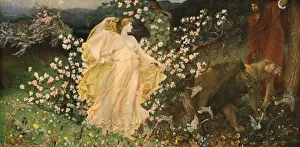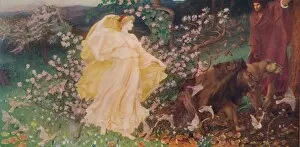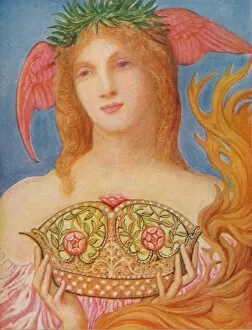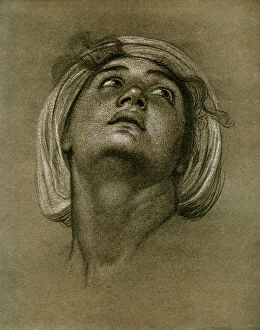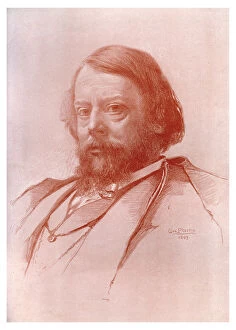William Blake Richmond Collection
Sir William Blake Richmond was a renowned English artist known for his diverse range of works
All Professionally Made to Order for Quick Shipping
Sir William Blake Richmond was a renowned English artist known for his diverse range of works. In 1886, he created the mesmerizing painting "Hermes, " which showcased his exceptional talent and attention to detail. Another masterpiece by Richmond is "Dionysus and the Maenads" from 1901, capturing the wild energy and frenzy associated with Greek mythology. One of his notable works is "Sarpedon, " an oil on canvas piece created between 1875-76. This captivating artwork showcases Richmond's ability to depict emotion through brushstrokes and color choices. Additionally, he contributed to St Paul's Cathedral with stunning new mosaics, as seen in a black-and-white photograph. Richmond's skill extended beyond traditional paintings; he also excelled in creating allegorical figures like "An Allegorical Female Figure. " The depth and symbolism present in this oil-on-panel artwork demonstrate his mastery of storytelling through visual art. In 1884, Richmond depicted an audience captivated by Aeschylus' play Agamemnon in Athens. This painting captures the essence of theater and transports viewers back in time to experience the atmosphere firsthand. Another remarkable creation by Sir William Blake Richmond is "Venus and Anchises. " He explored this mythological theme multiple times throughout his career, showcasing different interpretations over the years. These artworks highlight both his versatility as an artist and his fascination with classical mythology. "The Crown of Peace" from around 1882 portrays Richmond's desire for harmony amid turbulent times—an idea that resonates even today. His study pieces such as "Study of a Head" display meticulous attention to facial features while revealing glimpses into the artist's creative process. Throughout history, Sir William Blake Richmond has left an indelible mark on British artistry. As evidenced by titles like KCB (Knight Commander) RA (Royal Academician), he received recognition for his contributions during his lifetime.


